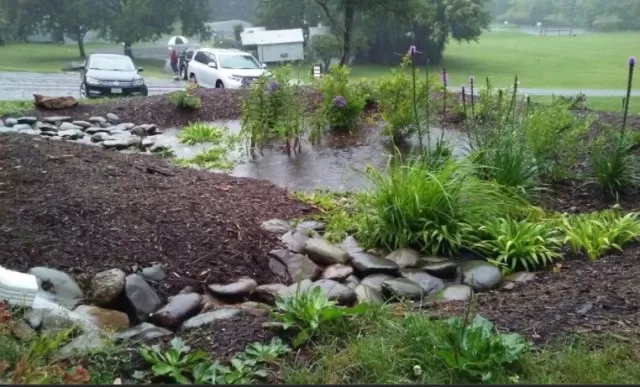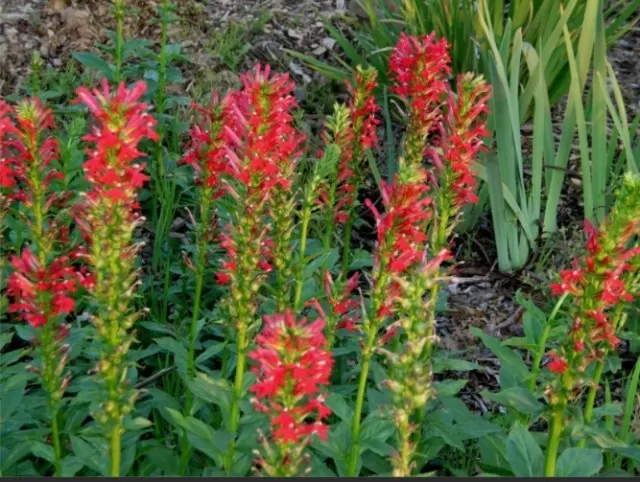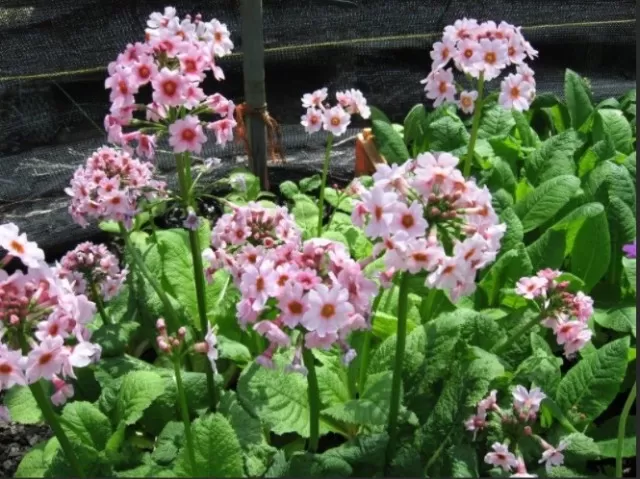Runoff-Reducing Rain Garden Plants. If excess rainwater is wreaking havoc on your landscape, fear not, for there’s a creative and eco-friendly solution to transform the challenge into an opportunity! Instead of letting the rainwater cause problems, why not harness its potential and create a vibrant pollinator garden that thrives with life?
By corraling the excess rainwater, you can design a picturesque garden that not only benefits your landscape but also provides a sanctuary for vital pollinators like bees, butterflies, and hummingbirds. Embrace the natural flow of water to nourish your plant life and create a sustainable haven for these essential creatures.
Harvesting Nature’s Gift: Creating a Flourishing Rain Garden in Your Backyard

In regions blessed with abundant rainfall, turning that occasional nuisance of pooling rainwater into a thriving rain garden can be a game-changer.
Embrace the opportunity of that damp spot in your yard, where rainwater accumulates, and transform it into a haven for native plants and water-loving species. Not only will you be supporting vital pollinators, but you’ll also be effectively managing runoff and transforming an eyesore puddle into a picturesque landscape feature.
Careful planning is essential before embarking on this venture.
Keep in mind that the rain garden should be situated at least 10 feet away from your house, and you must steer clear of septic systems and underground utility lines. Constructing a berm on the lower side of the garden will effectively contain the water within its bounds, ensuring it remains a delightful oasis even during heavy downpours.
Once the groundwork is set, it’s time to curate a diverse selection of wildflower species that can flourish in the occasional standing water.
Consider introducing a variety of resilient and adaptable plants that can thrive in wet conditions, such as those listed below. By thoughtfully designing your rain garden, you’ll not only create an enchanting space but also contribute to the preservation of local biodiversity and water conservation.
Unleash the beauty and eco-friendly potential of your garden by crafting a harmonious balance between nature’s gift of rainfall and the flora that thrives in it.
Embrace the art of rain gardening, and witness your yard transform into a captivating sanctuary for both you and the vibrant ecosystem it supports.
Blue Flag Iris (Iris versicolor): Majestic Blue-Purple Flags Waving Across Seasons
In the enchanting realm of gardens spanning USDA zones 3 through 9, the resplendent Blue Flag Iris reigns supreme.
This breathtaking iris species unfurls its 4-inch blue-purple flags in a captivating dance during late spring and early summer, casting a spell on all who behold its beauty. With its striking sword-shaped foliage reaching a height of 2 feet and elegant 30-inch flower stalks, the Blue Flag Iris is a true spectacle to behold.
As the seasons transition and the touch of frost begins to paint the landscape, the once vibrant foliage of this iris may begin to flag.
But fear not, for a simple remedy awaits. Once the frost has had its fleeting effect, you can carefully trim back the foliage to a mere 1 inch above the rhizomes.
However, a word of caution is in order, for these rhizomes possess toxicity, necessitating cautious handling while tending to your cherished iris.
With each passing year, the Blue Flag Iris graces your garden with renewed splendor, enchanting not only your senses but also the pollinators who visit, adding to the magical allure of your landscape.
Its enduring charm and low-maintenance nature make it a cherished addition to any garden. So, let the Blue Flag Iris fly its banners high, adding a touch of majestic elegance to your outdoor haven.
Cardinal Flower (Lobelia cardinalis): Nature\’s Scarlet Beauty in your Garden

Bringing a regal touch to the landscapes of USDA zones 3 through 9, the Cardinal Flower (Lobelia cardinalis) stands tall and proud, donning its scarlet blooms reminiscent of the robes worn by Roman Catholic cardinals.
Standing at an impressive height of around 3 feet, this striking perennial is a sight to behold, captivating all who lay eyes upon it.
As the summer sun warms the earth, the Cardinal Flower bursts into its full glory, adorning its sturdy stalks with a profusion of vibrant 1-inch scarlet blossoms.
Nature’s living homage to the illustrious red plumage of its avian namesake, it graces the garden from mid-summer through early autumn, extending a warm invitation to the charming hummingbirds.
While its scarlet hue is its signature, the Cardinal Flower also offers delightful surprises with variations available in white and pink.
Just like a red carpet, this captivating flower beckons both pollinators and admirers alike, creating a spectacle of color and life in your outdoor sanctuary.
Embrace the allure of the Cardinal Flower, and witness your garden transform into a haven of beauty and activity.
As the gentle breeze carries whispers of its elegance, you’ll find yourself immersed in the mesmerizing world of nature’s scarlet beauty. So, let the Cardinal Flower grace your garden and enchant your senses as it welcomes hummingbirds with open arms and a burst of vivid color.
Ditch Lily (Hemerocallis fulva): A Roadside Beauty with Vigorous Charm
Despite its origins in faraway China, the Ditch Lily (Hemerocallis fulva) has found a comfortable home in the wild, earning its nickname due to its remarkable ability to thrive in the most challenging roadside trenches.
While ditchwater may seem unremarkable, these hardy daylilies are anything but ordinary, bringing a burst of vibrancy to even the dullest surroundings.
With their tenacious nature, these plants stand tall and strong, gracefully tolerating soggy conditions without a hint of complaint.
The lush foliage reaches heights of up to 2 feet, while the magnificent stalks shoot up to 3 to 4 feet, proudly displaying their 5-inch brassy orange trumpets. In the enchanting USDA zones 3 through 8, the Ditch Lily transforms mundane landscapes into a symphony of colors, brightening up roadsides and beyond.
Beware, though, for its vigor sometimes leads to invasiveness, as it asserts its presence with determination.
While this wild beauty can command attention, it’s essential to be mindful of its potential to spread beyond bounds.
Additionally, a note of caution for feline lovers, as the Ditch Lily contains compounds that are toxic to cats.
While this doesn’t diminish its allure, it’s crucial to ensure a safe environment for our feline companions.
Embrace the untamed charm of the Ditch Lily, and let its resilience and vivacity inspire you to find beauty in unexpected places.
Whether adorning the roadside ditches or gracing your garden, this wild daylily proves that even in the most unlikely settings, nature’s wonders can blossom with equanimity and grace.
Primula japonica and Primula florindae: Ankle-Deep Delights in Your Garden

Among the diverse family of primroses, two exceptional members, Primula japonica and Primula florindae, have a unique affinity for standing water.
While not all primroses appreciate running water, these two species find solace in the serenity of ankle-deep pools, showcasing their beauty and charm in their own distinct ways.
The Japanese Primrose (Primula japonica), flourishing in USDA zones 4 to 8, reaches a majestic height of 2½ feet.
Its striking presence in the garden is accompanied by the Tibetan Primrose (Primula florindae), which stands tall at 3 feet, thriving in USDA zones 3 to 9. Unlike some of their kin, both these primroses bloom later in the season, gracing us with their umbels of delightful blooms during late spring or early summer.
The Japanese Primrose, after its splendid display of flowers, typically completes its flowering cycle around this time.
However, the journey doesn’t end there! Enter the highly fragrant Tibetan Primrose, whose captivating allure extends well into the heart of summer, adding an extra touch of magic to your garden.
As you welcome these enchanting primroses into your landscape, prepare to witness the beauty of ankle-deep floral wonders, filling the air with delicate fragrances and vibrant colors.
Their preference for standing water showcases nature’s remarkable ability to adapt and delight us with an array of floral personalities.
So, whether you choose the regal heights of the Japanese Primrose or the intoxicating fragrance of the Tibetan Primrose, you’re sure to be rewarded with a symphony of blooms that will leave you enchanted throughout the changing seasons of spring and summer.
*The information is for reference only.